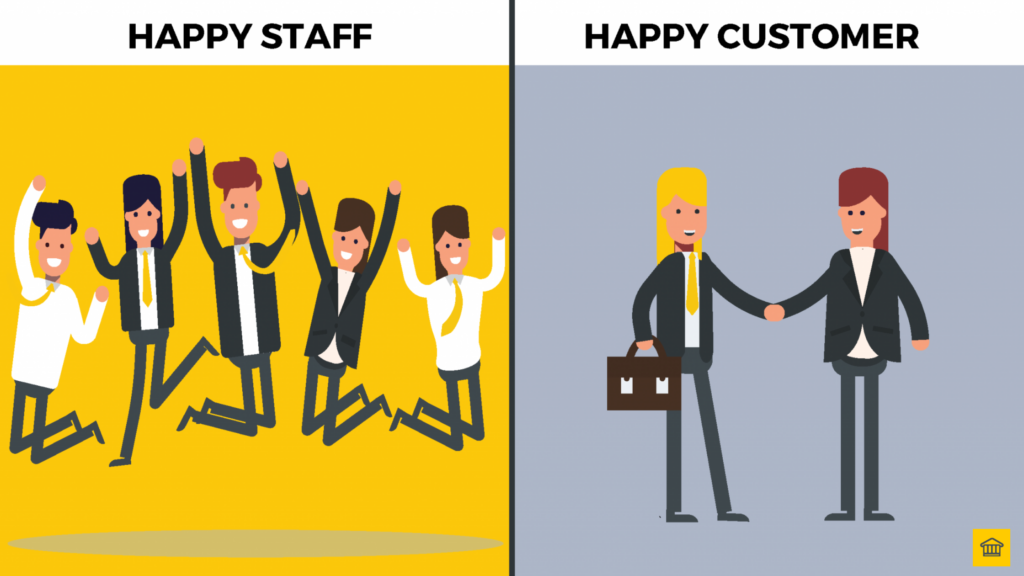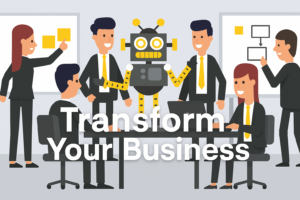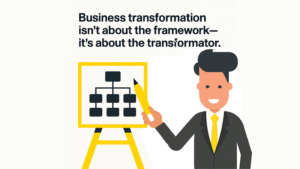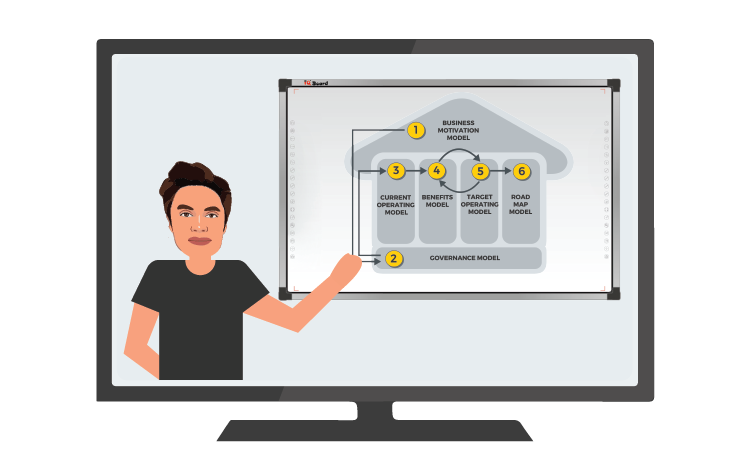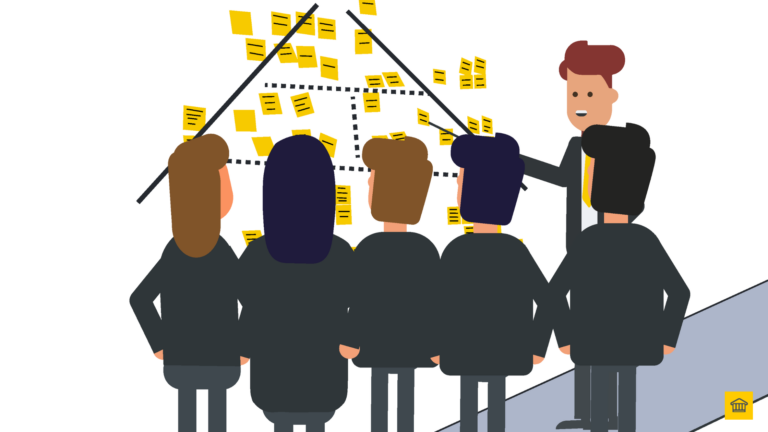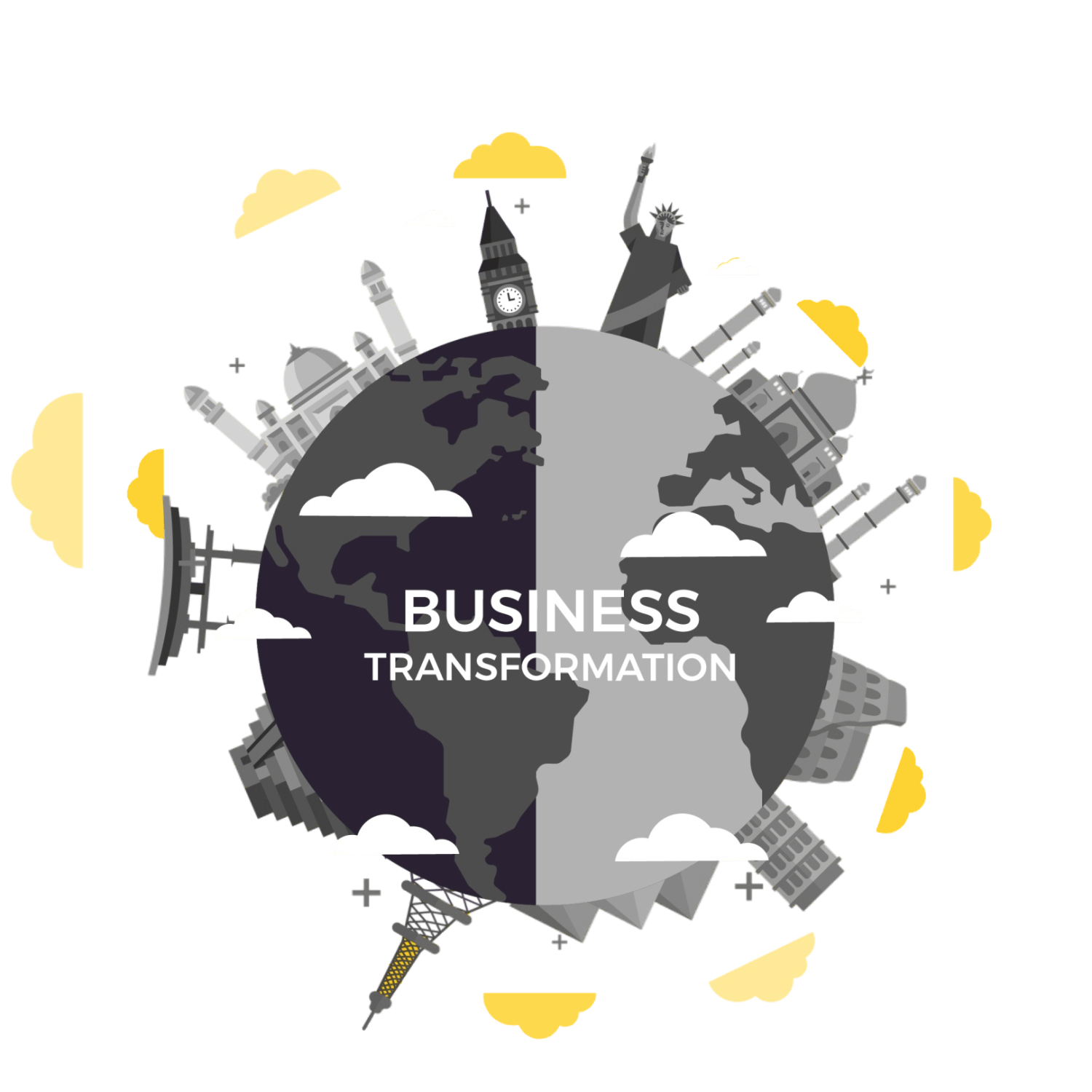Welcome to this insightful blog post from Hoba Tech, where we delve into the common pitfalls that service design agencies often make. This post aims to equip you with the knowledge to avoid these toxic mistakes and steer your agency towards success.
In this post, we identify five common mistakes, providing a comprehensive understanding of each and how they can hinder the growth and success of a service design agency. These mistakes range from a lack of clear vision and strategy to failing to innovate. By understanding these mistakes and how to avoid them, you can navigate your service design agency towards growth and success.
Here’s what you can expect from this post:
(click the links to skip to the section below):
NB: Click the images to expand them 📸
You must know by now that around 70% business transformations end up failing. But do you precisely know the reason behind these stats? The brutal reality is that those businesses didn’t keep their consumer interests at heart.
So, what really is the key to success? What divides the success stories from the failures is a rock-solid design based on a clear understanding of the consumer needs and wants. This explains why service design plays a key role in your transformation and it’s success.
So, What Exactly is Service Design?
Service design is basically a term that revolves entirely around the customer journey. In its simplest form, it is a roadmap or a blueprint that contains the steps the customer takes when engaging with your service or product.
This umbrella term brings together all the other business departments to realise how a consumer interacts with your product or service. And then using the information, it helps the company improvise on their products or service – with the goal to make significant improvements to the customer experience.
It is important to note that service design goes way beyond the user experience and takes into account all the touch points and platforms involved in the entire user journey. It involves both the consumers and employees in creating a strong foundation for your business growth and success.
Want to learn more? I have compiled a detailed guide on how you can map your customer journey here!
Since this topic is big –I have divided the post into two (2) parts, and two (2) separate posts – 5 Toxic Mistakes that Service Design Agencies make, and 5 Steps to Avoiding Them.
In this first part, we will be discussing the common mistakes that businesses in the service design sector make that you wouldn’t want to repeat.The common blunders include –
- Not prioritizing your customers enough
- Inability to define your unique value proposition
- Making common communication errors
- Not creating a practical template
- Making common training blunders
(P.S. I will then disclose how you can avoid the common pitfalls in the second post, so make sure you don’t miss out on that!)
I’ll expand on each of these below and provide actual examples of where this has happened in practice, so you can thoroughly understand how these complications can be fatal for your business in the long run.
You will notice, these look like problems with particular businesses and sectors, but what they are is ‘outcomes’ of mistakes that service designers made, come to realisation in the real world, due to lack of good service design.

6-Steps to Business Transformation Success
WHAT THE TOP 30% OF ORGANISATIONS KNOW THAT YOU DON’T 👉

👏 "5 Common Mistakes Businesses in the Service Design Sector Make - Not Prioritizing Your Customers, Generalizing individual customer outcomes. Can you guess the other 3? 🤨💡#ServiceDesign ServiceDelivery #ConsultancyMistakes"
Heath Gascoigne Tweet
5 Common Mistakes Businesses in the Service Design Sector Make
1. Not Prioritizing Your Customers
x Forgetting that the customers come first!
MoviePass, a subscription-based business that allowed customers to watch a movie/day for $10/month, suspiciously canceled a customer’s account without notice. Upon further research, the company informed that the San Francisco-based customer had watched a “premium movie”, which was against the subscription policy, hence the cancellation without a refund.This strategy heavily affected the company.
× Lack of proactive customer service
A few years ago, Target faced a Facebook user who started a new Facebook page impersonating Target’s Customer Service Team when it had recently released the new gender-neutral signage. Lack of proactive customer service steps led to the anonymous crusader getting viral and stirring massive controversies for the brand.
× Generalizing individual customer outcomes
Samsung once insisted on the customer being available for a delivery package while skipping work just to ensure that the package is delivered safely. When the customer argued that it was pointless to skip work just to wait for a package, the customer service rep refused to provide any other alternatives. Although he should have contacted a manager to shift the delivery schedule for this particular customer or provide with another alternative.
× Creating customer success silos
A customer of Spectrum, an internet provider, contacted the customer support to request for a maintenance visit to set up her Internet. When the maintenance employee failed to visit the customer, she was told that due to the main entrance of the building being locked, the maintenance employee had returned. To top it off, the next visit wasn’t available for the next 15 days. This resulted in the customer cancelling her subscription and opting for a Spectrum competitor.
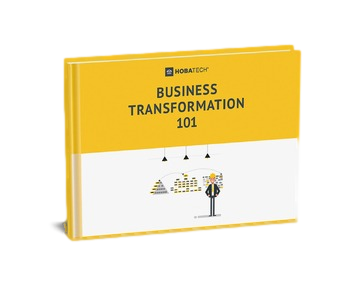
👏 "Neglecting employee development is the fastest route to a stagnant agency. 🚧📉" #ServiceDesign EmployeeDevelopment #ThriveOrDives"
Heath Gascoigne Tweet
2. Inability to Craft an Effective Value Proposition
Your Value Proposition is your unique offering that helps you stand out from your competitors. It helps your consumers understand why and how your product or service is special. Failing in this arena is essentially just the beginning of the decline of your business.
× Failing to understand the difference between customers and supporters
Designing Value Propositions is all about attracting and appealing to the people who generate revenue for you, the customers.
Everybody wants to have supporters who like their brand, spread the word, and that’s pretty much it. They might be your referrers, but their contributions are smaller than that of your genuine customers who buy your stuff. Lesson here =focus on actual customers.
× Assuming customers are sophisticated buyers
Never assume. Identify your customers. Is this their first time buying this kind of a product/service or are they regular users? Your business is based on this identification.
Apple does this brilliantly, while the PC community mocks Apple’s simplistic design, it knows that Apple fans value simplicity over high-specs and they succeed in providing that to the customers.
× Allowing the “nice-haves” to take-over
Whenever we brainstorm for innovative ideas, we tend to pen-down as many ideas as possible. Now the process of distilling the important factors from the side benefits is essential, which many of us forget.
When pitching your new value propositions to your team or investors, you would want to have few ‘steel-man’ reasons rather than a bunch of ‘strawman’ reasons (that are undecided and not agreed, validated or verified) to ensure that the value proposition is strong and test-able.
× Locking in your customer profile too early
Businesses are normally restless in trying to find new customers rather than inventing new services. However, examples like Nespresso and Instagram show us that sticking to the customers’ pain points pays off.
Instagram revamped its app’s features to shift from effectively a copy of a similar app (Foursquare) to an app that shares photos, which attracted a huge customer base. Similarly, Nespresso expanded their domain by not only being accessible to home coffee drinkers, but to corporate offices and hotels.
× Solving problems for beneficiaries, not customers
Focusing on your beneficiary (someone who benefits from your products) is not bad, until it becomes a routine. It is indeed good to focus on how this business helps the needy people, but the main goal of a business should still remain to make sales, from your customer (the one who purchases your product). The mistaken thinking sounds likes this ”You’ll enjoy buying this and also help someone” is likely to work for more people than “You’ll help someone by buying this”. Notice the difference?
Get more insights into the best approaches to amplify your business with my free webinar here!
3. Communication Pitfalls
Communication is the backbone of service design, if not your business. Without proper communication and interactions in place, you can’t expect your service design to reach its goals, let along your business.
Here are some of the most common communicational mistakes that businesses make, which lead to lack of successful customer retention.
× One-size-fits-all communication approach
In pursuit of marketing products/services, many recognized brands completely ignore the cultural differences in consumer psychology.
Since communication is all about perception, it is strategically hurtful to assume that all your customers will perceive your message in the same way.
× Speaking more and listening less
Effective communication is a combination of speaking and listening in a balanced way. However, most people think of a conversation as competitive sport, and they need to win it. Do you know anyone like that?
When dealing with customers, you need to let your guard down and value your customers’ points-of-view in order to plan your next steps in helping to improve the customer experience.
× Assuming instead of inquiring
The two most crucial mistakes most customer support reps make are:
- They tend to believe their message is perfectly heard and perceived by the receiver, the way it was sent, every single time.
- If a clarification is needed, they need to understand it on their own instead of asking the customer.
They fail to inquire about the customer expectations, how they can improve themselves using customer feedback, and enhance the customer experience. Instead, they stick to a monotonous conversation, which eventually leads to nowhere.
× Avoiding difficult conversations
Most customer support reps tend to flee from tough conversations that might lead to conflict. They try to twist their words failing to take responsibility for the facts. When a customer explains a situation, they tend to maintain professionalism by subtly mentioning that they are working to make it right but in reality, don’t do anything. To make matters worse, it’s not uncommon for customer support staff to provide false hopes in effort the customer hangs up satisfied, irrespective of the overall status of the issue being resolved.
× Not reassessing your SLA regularly
Business Manager and Leaders mistakenly believe that a well-crafted SLA should remain that way irrespective of the changes that take place later on. This results in clear difference between the actual situation and the documented process, policy and/or procedure. Therefore, it is recommended to reassess and input the necessary changes to your services, regulatory requirements, etc. in your SLA, regularly.
Looking to transform your Organisation with less stress & less time? Search no more!

- Introductory Offer
- Huge Savings. On Sale Now!
👏 "Ignoring client feedback is like sailing a ship without a compass. 🚫🧭 You're bound to get lost and hit an iceberg!" 🤨💡#ServiceDesign ServiceDelivery #ClientFeedbackIsKey #AvoidTheIceberg
Heath Gascoigne Tweet
4. Common Template Errors
Think of your templates as your framework – when you have a faulty framework or foundation, the results won’t work in your favour.
Here are the common errors businesses often encounter when creating a template:
× It focuses on every aspect
Businesses tend to create templates addressing every aspect. This becomes confusing for the Customer and Users, and very hard to maintain, to keep all the different types of information in sync across the different domains, functions and processes. To simply things, the template should be simple and focus on one (or at most, limited) things.
× It states no quality KPIs
Businesses tend to focus entirely on the volume of the work when creating templates, when quality should really be the main focus.
× It does not contain any time-indicators
Time indicators are absolutely crucial to see how much time each step should take. Knowing how long a process takes, helps when looking to improve it, namely speed it up.
Having trouble creating an appropriate design/template? Catch our all-inclusive course here and get all the tools you need to transform your business, and reduce your change, financial (and technology) debt!
5. Training Blunders
There’s no business that does not benefit from training their employees and honing their skills. If we’re honest, investing in your people is a smart investment in so many ways. However, faulty training can cost you significantly. Here’s a list of the common mistakes that businesses tend to make in implementing their training programs.
× Appointing the wrong people for training your employees
The new hires are likely to adapt to the negative traits of the person they’re learning from.
Laura MacLeod, the New York City-based creator of From the Inside Out Project, explained that she wasn’t comfortable in training the new hire when she worked as a server and bartender. She was helping someone, yes, however, it was labor-intensive. Furthermore, she lost significant amount of money due to fewer customers served.
× Employees never verify whether they learned from the training
Participating in a training and actually learning from it are two extremely different things.
Bill Sterzenbach, a partner at Upward Brand Interactions, an Ohio-based marketing and advertising agency, accepted that he made this mistake of never really checking up on the trainees if they had learned what they were taught
× Too much training
Jerry Lee, founder of Story Leather, Inc., a California-based company that creates custom leather goods, revealed that he recently burned a newly hired employee out.
The new hire was supposed to perform a single function – customer support. However, Lee introduced the trainee to the massive potential of the company and domains to work in, which confused the trainee and eventually the newly hired employee was overwhelmed with where to focus, he couldn’t focus on supporting the customer.
× Mundane and boring training routines
Try to make sure your training is not sleep-inducing even if the tasks are mundane in nature.
Barry Maher, owner of Barry Maher & Associates, claims that once a newly hired employee’s eyes roll back in their head due to boredom or monotony, you’ve lost them. More importantly, they start losing interest in learning.
× Rushed training
“Usually, SMB owners are in desperate mode”, says Donna Lubrano, a Business professor at Northeastern University, Boston.
Due to their demand and quantity of work, they required their new hires to get up and running as quickly as possible. They expect the trainee to start generating the ROI quickly and efficiently, which hurts the trainees.
Looking for the Best Training to deliver your Business Transformation? Search no more!
- 30-Day Money-Back Guarantee
- Risk FREE

👏 "A lack of clear vision and strategy is like driving blindfolded. 🙈🚗 CIOs, CTOs, COOs, Heads of Divisions, don't let your agency crash and burn! Set your sights on success and steer your team in the right direction. 🎯🛣️ #ClearVision #StrategyIsKey"
Heath Gascoigne Tweet
Conclusion
In conclusion, this insightful blog post from HOBA Tech has highlighted the five common, yet toxic, mistakes that service design agencies often make. These include a lack of clear vision and strategy, ineffective communication, ignoring client feedback, neglecting employee development, and failing to innovate.
These pitfalls can significantly hinder the growth and success of a service design agency. However, with a clear understanding and proactive avoidance of these mistakes, agencies can successfully navigate towards growth and prosperity.
If you found this post informative and wish to delve deeper into the world of service design and related topics, we encourage you to explore further on HOBA Tech’s website.
For those interested in discussing how HOBA Tech can assist your service design agency in circumventing these common pitfalls, please do not hesitate to contact us. We eagerly await the opportunity to hear from you and assist your agency in its journey towards success.
Thank you for reading this!
Sincerely,

Heath Gascoigne
P.S. If you want to join our Business Transformator community of 2,000+ like-minded Business Transformators, join the community on the Business Transformator Facebook Group here.
P.P.S. If you want to learn more about business transformation, check out The Business Transformation Playbook here.
For more information, visit https://www.hoba.tech



